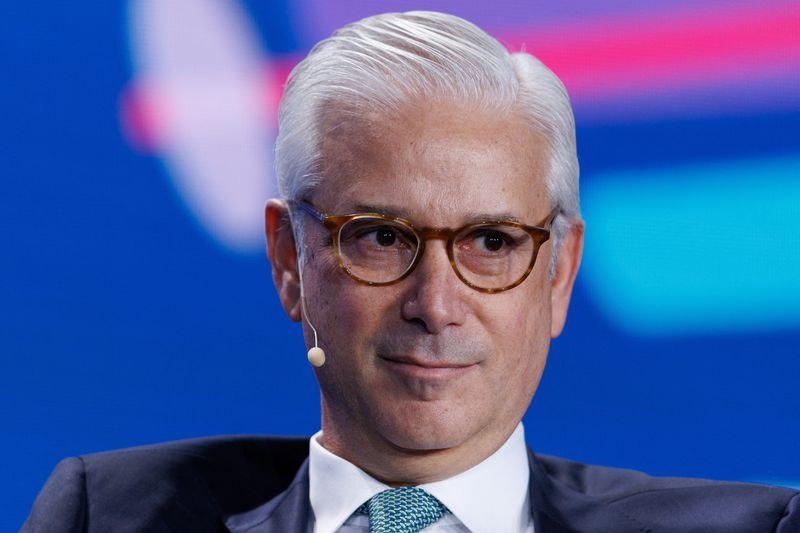By Nupur Anand
NEW YORK (Reuters) - Wells Fargo CEO Charlie Scharf told investors on Tuesday he expects to book higher-than-anticipated severance expenses between $750 million to a little less than $1 billion in the fourth quarter.
"We are continuing to focus on efficiency with turnover dropping, unfortunately, we're going to have to be more aggressive about our own internal actions," Scharf said, adding that he thinks it would be the right step in the long term.
Last month the bank laid off fewer than 50 bankers from its corporate and investment bank, after the San Francisco-based lender had warned earlier its headcount could decline further in an effort to become more efficient.
The bank has reduced its workforce since the third quarter of 2020 and it stood at 227,363 at the end of third quarter of this year.
It is still operating under an asset cap that prevents it from growing until regulators deem that it has fixed problems from a fake accounts scandal. The bank still has nine open consent orders from banking regulators who require additional oversight of its practices.
Scharf, speaking to investors at the Goldman Sachs U.S. Financial Services Conference, said management's top priority included getting the consent orders lifted.
"We feel very good about the progress we have made," Scharf added.
The fourth-biggest U.S. bank has seen some weakness in its commercial real estate portfolio, particularly the office loans.
"We expect to see losses (in the office portfolio) in Q4 which will continue into next year," Scharf said.
Wells Fargo set aside $359 million for potential credit losses on office real estate in the third quarter, bringing total allowances to $2.6 billion for the first nine months of 2023.
Despite high interest rates and fears of an economic downturn, Scharf said the economy remains strong but he is cautious going into 2024.
The consumer is still resilient and credit card growth for the bank may pick up, Scharf added.

Wells Fargo has reduced its origination in auto loans and has also been reducing the size of its mortgage servicing portfolio.
U.S. consumers are still in strong financial health, according to executives from the biggest U.S. banks. But in recent months, spending has slowed and more Americans are starting to fall behind on their loan payments.